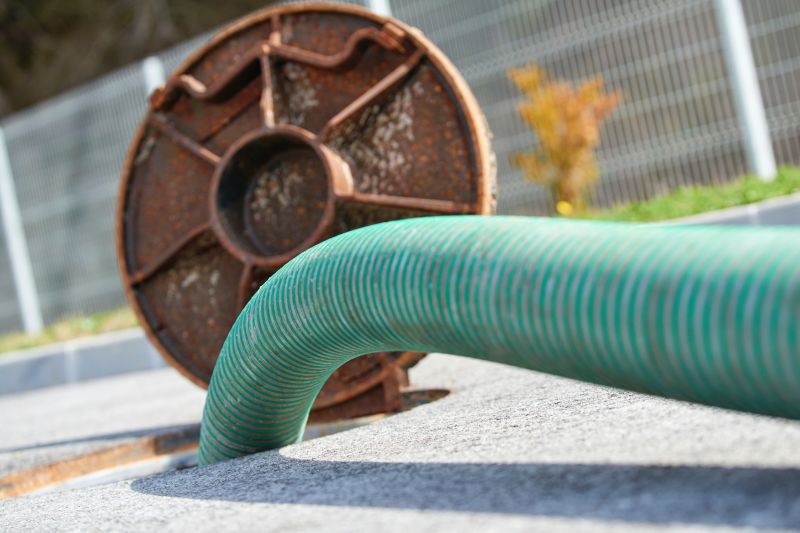Leading Products For Septic Inspections That Ensure Reliable Results
Explore top-rated tools and equipment designed to help professionals conduct thorough and accurate septic system inspections.
 Septic inspections are essential for maintaining the health and functionality of onsite waste management systems. Proper inspection tools and products enable homeowners and professionals to assess the condition of septic tanks, leach fields, and associated components effectively. These products help identify potential issues such as blockages, leaks, or sediment buildup before they escalate into costly repairs or system failures. Using the right inspection equipment can also ensure compliance with local regulations and prolong the lifespan of the septic system.
Septic inspections are essential for maintaining the health and functionality of onsite waste management systems. Proper inspection tools and products enable homeowners and professionals to assess the condition of septic tanks, leach fields, and associated components effectively. These products help identify potential issues such as blockages, leaks, or sediment buildup before they escalate into costly repairs or system failures. Using the right inspection equipment can also ensure compliance with local regulations and prolong the lifespan of the septic system.
Top Overall Option
Multi-Function Septic Inspection Kit
This versatile inspection kit combines multiple tools such as inspection cameras, dye testing kits, and pressure gauges into a single package. It offers a comprehensive approach to septic system assessment, making it suitable for both professional inspectors and diligent homeowners. The kit provides detailed visuals and measurements, aiding in accurate diagnosis of potential issues without invasive procedures.
Types of Products For Septic Inspections
Inspection Cameras
Portable cameras designed to navigate septic tanks and pipes for visual inspections, helping identify blockages or damages.
Dye Testing Kits
Products that introduce safe dyes into the system to trace flow and detect leaks or improper drainage.
Pressure Gauges
Devices used to measure pressure levels within the septic tank and piping, indicating system performance.
Tank Access Risers
Modular access points that facilitate easier inspection and maintenance of septic tanks.
Effluent Flow Meters
Tools that measure the flow rate of effluent to assess system capacity and functionality.
Sounding Rods
Long, calibrated rods used to measure the sludge and scum levels inside septic tanks.
Leak Detection Sprays
Sprays that help identify leaks around tank joints and fittings during inspection.
Digital Inspection Devices
Electronic tools that provide real-time data and diagnostics for septic system evaluation.
Portable Water Testing Kits
Test kits for analyzing water quality and detecting contamination from septic system leaks.
Septic Tank Sampling Ports
Access points designed for collecting samples from within the tank for laboratory analysis.
Flow Alarms
Alert systems that notify users of abnormal flow rates or blockages.
Inspection Mirrors
Mirrors with adjustable arms for viewing hard-to-reach areas inside tanks and pipes.
Borescopes
Flexible, camera-equipped tools for detailed inspections of confined or inaccessible spaces.
Chemical Test Strips
Strips used to quickly assess chemical levels and detect potential contamination.
Septic System Maps
Detailed diagrams or charts to document system layout and inspection findings.
Popular Choices
Compact cameras that provide visual access to septic tanks and pipes, popular among inspectors and homeowners.
Widely used for leak detection and flow tracing in septic systems.
Devices favored for their ease of use and accurate pressure readings.
Simple, reliable tools for measuring sludge and scum levels inside tanks.
Commonly used for quick leak identification around fittings and joints.
Popular for assessing effluent flow rates during inspections.
Handy for viewing tight or hard-to-reach spaces within septic components.
Affordable and easy-to-use options for basic water quality testing related to septic health.
Useful for documenting inspection results and planning maintenance.
Trending among homeowners for quick assessments of water safety.
Increasing in popularity for detailed visual inspections in confined spaces.
Gaining popularity for real-time monitoring of septic system flow irregularities.
Preferred for their enhanced visibility in dark or obscured areas.
Popular for quick on-site chemical analysis during inspections.
Used frequently to evaluate system capacity and flow consistency.
A comprehensive septic inspection typically involves examining access points, monitoring effluent flow, and checking for signs of deterioration or damage. Advanced inspection devices, such as electronic sensors and portable testing kits, provide detailed insights into system performance. Regular inspections, supported by reliable products, can help prevent unexpected failures and maintain the efficiency of the septic system.
In addition to inspection devices, there are various ancillary products designed to facilitate easier and more accurate assessments. These include inspection cameras, dye testing kits, and pressure gauges. Some products are tailored for specific system types or inspection scenarios, offering versatility for different property sizes and system complexities. Investing in quality inspection products can save time and provide peace of mind by delivering clear, actionable information about the septic system’s condition.
Key Buying Considerations
- Compatibility with your septic system type and size
- Ease of use and portability of the inspection tools
- Availability of visual or digital diagnostics
- Durability and material quality of inspection devices
- Range and length of inspection cameras or rods
- Ability to access hard-to-reach areas safely
- Accuracy and sensitivity of measurement devices
- Battery life and power source options
- Compatibility with existing inspection procedures
- Cost and value for the features offered
- Availability of replacement parts or accessories
- Ease of cleaning and maintenance of tools
- Availability of instructional resources or guides
- Brand reputation and customer reviews
- Compliance with local inspection standards and regulations
This content contains affiliate links. We may earn a commission if you make a purchase through these links, at no additional cost to you.
